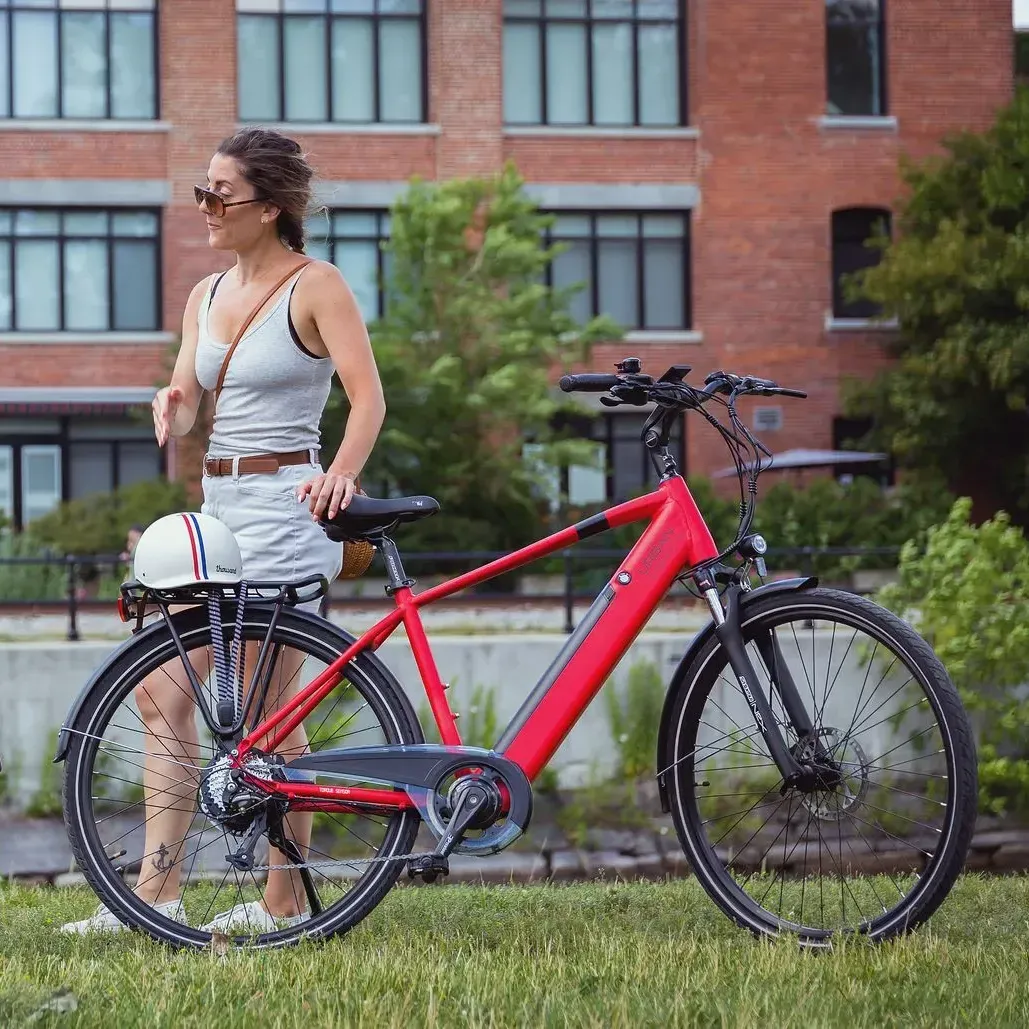Frequently asked questions
Welcome to our FAQ page! Here you will find answers to the most frequently asked questions.
What are the regulations for electric bikes in Ontario?
In Ontario, electric bikes (e-bikes) are considered power-assisted bicycles. They must adhere to certain power limits (maximum 500 watts) and speed limits (assistance must cut off at 32 km/h). They generally don't require a driver's license for adults aged 16 and over. An approved bicycle helmet must be worn.
Do I need a driver's license, registration, or specific insurance in Ontario?
For e-bikes compliant with regulations (max 500W power, max 32km/h assistance), the answer is no for a driver's license if you're 16 or older. There is no registration required. As for insurance, your home insurance might cover theft or damages, but we highly recommend checking with your insurer, as specific coverage might be wise in case of an accident or damages caused to others.
Where can I ride an electric bike in Ontario?
E-bikes are permitted on most bike paths, roads, and trails where traditional bicycles are allowed. It's important to respect specific regulations for certain paths, trails, or parks that might have restrictions (e.g., prohibition on some narrow mountain bike trails).
What's the typical range of an electric bike in Ontario, considering terrain and distances?
Range varies depending on the model, battery size, assistance level used, rider's weight, and weather conditions (cold temperatures affect range). Generally, you can expect 50 to 100 km of range (up to 200 km with two batteries on some bikes) for most models.
What's the average price of an electric bike in Ontario and where can I buy one?
Range varies depending on the model, battery size, assistance level used, rider's weight, and weather conditions (cold temperatures affect range). Generally, you can expect 50 to 100 km of range (up to 200 km with two batteries on some bikes) for most models.Prices vary considerably, from $1,500 to $2,000 for entry-level models to over $5,000 for high-end models. You can buy them at specialized bike shops, some sporting goods retailers, and online. We advise purchasing from a retailer who offers after-sales service.
Can I use my electric bike year-round in Ontario, even in winter?
Technically yes, but it's less common. Battery performance significantly decreases in cold weather. Furthermore, snow, ice, and salt can damage components. Some cyclists opt for studded tires and extra protection for winter commutes, but this requires more maintenance and adaptation.
How do I maintain my electric bike battery to ensure its longevity in Ontario?
Battery maintenance is crucial. You should avoid frequent full discharges, recharge the battery regularly (even if the bike isn't used), store it in a cool, dry place (ideally at room temperature), and avoid leaving it inactive for too long. In winter, if the bike isn't used, we advise storing it at half charge.
Are electric bikes a good mode of transportation for commuting in Ontario?
Absolutely. They're increasingly popular for urban and suburban commutes. They help reduce travel time, avoid traffic jams, lessen physical effort (especially useful in hot weather or on hills), and contribute to reducing your carbon footprint.
Are there grants or incentives for buying electric bikes in Ontario?
Currently (July 2025), there is no generalized provincial or federal grant program for electric bike purchases in Ontario. However, it's always a good idea to check with your local municipality, as punctual initiatives may exist.
What are the advantages of an electric bike over a traditional bike for an Ontarian cyclist?
Advantages include the ability to cover longer distances with less effort, climb hills more easily, carry more cargo (groceries, children), and arrive at your destination less tired and sweaty, which is ideal for daily commutes. They also open up cycling to a wider population, including those who are less fit or older, and are perfect for exploring Ontario's vast trail networks.
Pros and Cons
Are you hesitating between a traditional bike and an electric bike?
No problem! To help you make up your mind,
here's a simple comparison of the advantages and disadvantages of each option.
| Feature / Advantage | Traditional Bike | Electric Bike |
|---|---|---|
| Less pedaling effort | ❌ | ✅ |
| Easier uphill climbs | ❌ | ✅ |
| Ride further without fatigue | ❌ | ✅ |
| Arrive without sweating | ❌ | ✅ |
| Easily carry cargo | ❌ | ✅ |
| Accessible to everyone (age, fitness) | ❌ | ✅ |
| Serious car alternative | ❌ | ✅ |
| Enhanced driving pleasure | ❌ | ✅ |
| Greater trail exploration | ❌ | ✅ |
| Lower transport costs (gasoline) | ❌ | ✅ |
| Encourages active commuting | ❌ | ✅ |
| Fast, easy acceleration | ❌ | ✅ |
| Lighter weight | ✅ | ❌ |
| Simpler maintenance | ✅ | Maintenance offer at Pace |
| Unlimited range (depends on you) | ✅ | ❌ |
| More affordable upfront cost | ✅ | ✅ — Financing from 0% interest |
Are you hesitating about the purchase price of an electric bike?
At Pace, we've got the solution!
Take advantage of our 0% interest financing option
and finally realize your dream of riding an electric bike.
Do you still have a question?
Please feel free to send them to us! We are here to help
and will be happy to answer them as soon as possible.







